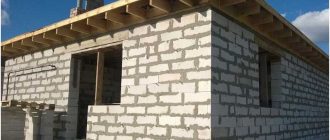Are you wondering how to properly putty the walls of the house or how to eliminate cold bridges using puttying? When doing the work yourself, you will need a suitable tool, as well as plaster, putty. Accuracy comes to the fore, because only then it is possible to qualitatively eliminate any irregularities and cracks.
When it is necessary to putty the walls of the house?
Wall putty is the application of a special finish to a given surface with a putty in order to level it. This is a very simple operation that you can successfully do yourself. The necessary tools for the putty are a float (putty) and plaster. Similar work is carried out when irregularities, cracks or holes from self-tapping screws appear on the surfaces..
How to putty walls inside the house?
Analyzing the plastering process, it should be stated from the very beginning that these actions require accuracy. First, it is important to choose the right material, prepare the material, as well as the tools for its application. The putty is available as a powder or as a finished product. To prepare the mixture, the powdery mass is mixed with water. Gypsum plaster is suitable for almost all coatings. Powders are used to fill large cavities in wall as well as ceiling surfaces. Knowing what to putty with, it also makes sense to indicate what consecutive actions should be taken.
To properly fill the holes, the best place to start is by removing all furniture from the room and any items that might get in the way or will get dirty. Cover heavy objects with foil. All dowels, nails, spacer screws must be removed from surfaces before starting work. The dowels can be removed by lightly tightening the screws, then grasping with pliers and pulling them out. It is also important to vacuum the cavities left over from screws and dowels. However, getting rid of dust in cavities is almost impossible, so it is worth slightly dampening the walls and ceiling with a rag..
Padding
Make sure you get a really high quality primer. It is applied to the surface with a roller or brush. After priming, wait at least 24 hours for the primer to dry completely. After that, you can prepare the solution. It is important to prepare as much material as you can apply in an hour. After this time, the solution begins to set, which makes its further use impossible..
Plastering plasterboard sheets on a false ceiling consists in surface treatment, as well as filling in the holes that remain from self-tapping screws. To do this, you will need: putty, universal primer, brush, roller, bucket, mixer, sanding spatula. Working with the roller will be much more convenient and accurate. The surface after priming is very smooth and ready for wallpapering or painting.
Plastering of gypsum plasterboards on the walls is carried out on a previously prepared base. In fact, plastering drywall is done twice with an hour break to dry the material. Wet plaster does not leave dust. After preparing the material, smoothing is carried out with a steel spatula, previously moistened with water. After completing the work, you can start wallpapering or painting.
The final stage is leveling and sanding the walls. However, this is done after the surface is completely dry. For this, sandpaper is used, as well as a sanding mesh..
